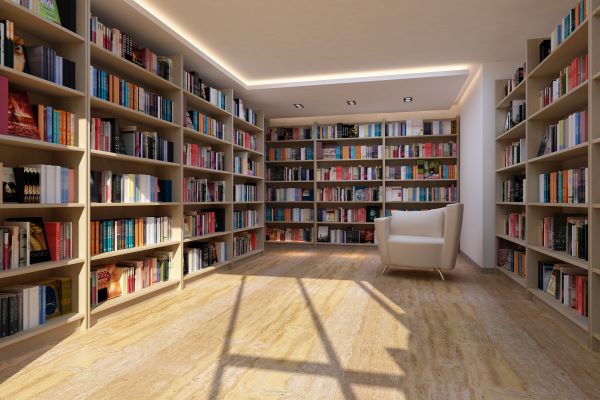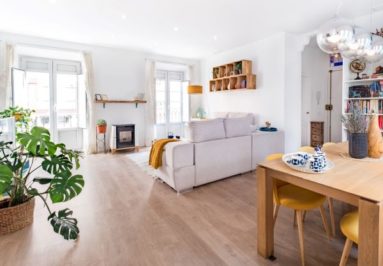With midterms approaching for college students across the country, it’s the most important time of the semester to find that perfectly quiet study spot. For most, that’s the library…but noise from team projects, tutoring, and study groups can ruin the silence and make it hard to focus.
While there are certainly some efforts that students can make to minimize distractions in the library (wearing headphones and earplugs, and reducing social interactions), other more intensive fixes may need to be undertaken by library management.
Here are some tips that can be easily implemented into any library with no construction and little cost, improving the acoustics and blocking out extra noise so you can get that A.
Sound Absorption Options for Libraries
Absorption Panels
There’s nothing worse than the loud echoes of people talking in the library when you’re trying to study. Wall-mounted absorption panels trap and contain sound waves, minimizing echoes and eliminating background noise. They are easy to install and can be designed to match any room decor. Our absorption panels are perfect for preventing sound from traveling throughout the room and distracting students.
While plush furniture and tall book cases may be helpful in absorbing and diffusing sound, there’s no substitute for sound absorbing panels when it comes to improving speech comfort in areas used for speaking events and gatherings.

Acoustical Foam
Acoustical foam is applied on top of existing walls, reducing the reverberation in a room and therefore improving acoustics. It is a very economically friendly solution to noise problems and is also incredibly easy to install! Check out our Acoustical Wedge Foam, which can be customized by size and thickness for any library’s needs.
Acoustical Foam is generally used for smaller, residential projects, but may still be a good fit for libraries that have limited foot traffic (as foam panels do tend to break down more quickly than rigid fiberglass board).
Sound Blocking Alternatives
Soundproof Curtains
The constant hustle and bustle of a college campus doesn’t have to seep into the library. Soundproof curtains can be easily installed over all of the windows in a library to block outside noise. They are much lower cost than installing double-pane windows and can be successfully hung by the everyday librarian! The AcousticCurtain™ comes in a variety of sizes and fabrics to fit in any campus library.
Soundproofing Membranes (MLV Sound Barriers)
For long-term, highly-effective soundproofing options, consider installing Mass Loaded Vinyl or other soundproofing membranes into the wall. This will greatly improve the STC performance of the partitions, and prevent unwanted bleed-over of noise into adjacent spaces.
This is critical when you have a noisy area (training rooms and conference spaces) directly next to quiet areas (study spaces). In that case, it’s critical to construct a wall with high STCs, that will block the noise transfer and minimize disruptions in the quieter area.
Door Seals and Sweeps
Many libraries have numerous private rooms where students can talk and work in groups to avoid distracting others. Unfortunately, sound still travels underneath doors and through gaps which can create noise disturbances in the rest of the library.

Door seals are fitted around the perimeter of doors to lock in noise and prevent it from transferring between rooms. Door sweeps form a tight fit against the threshold of a door, decreasing the noise escaping through the gap between the floor and the door. Keeping noise contained in the rooms it is meant to be in makes for a happier and more efficient study space for everyone.
Add Sound Masking to the Library to Provide Privacy
One last option is to add a Sound Masking system into the library. This is a critical option, since sometimes the entire space with the issue is open, and there are no demising partitions. If you hear chatter from nearby studiers, this could be extremely difficult to block out.
In this case, Sound Masking (or White Noise that is piped into the space via electrical speakers above the ACT system) helps to “mask” (or hide) unwanted sounds, helping students focus on their projects at hand. Speakers should be placed every 10-15 feet to allow for a consistent coverage in the space.
These minimal-construction product solutions can turn a stressful time into a peaceful and productive one for students. Simple soundproofing and sound masking library mitigation projects can range from a few thousand dollars to twenty thousand in larger libraries, but can completely transform the library experience.
Any of these solutions work for your library? Let us know in the comments below.
Happy studying!





